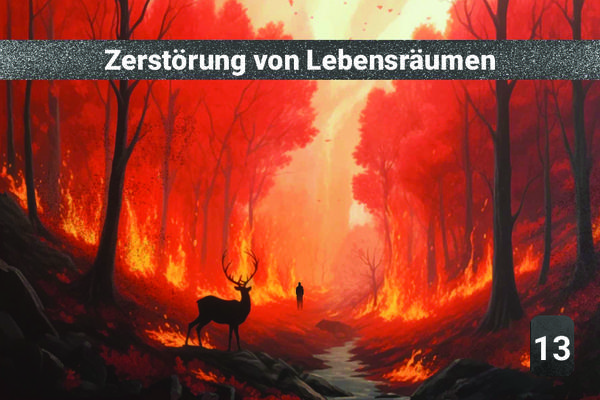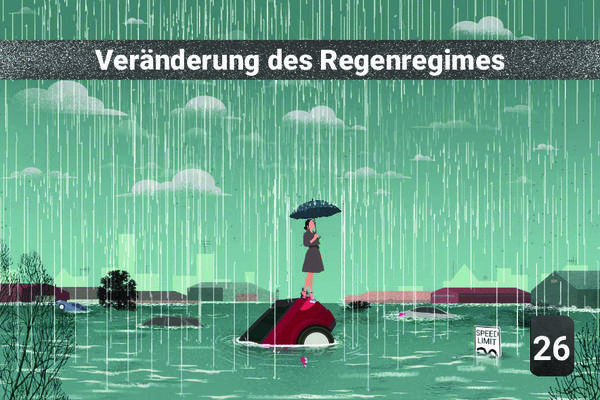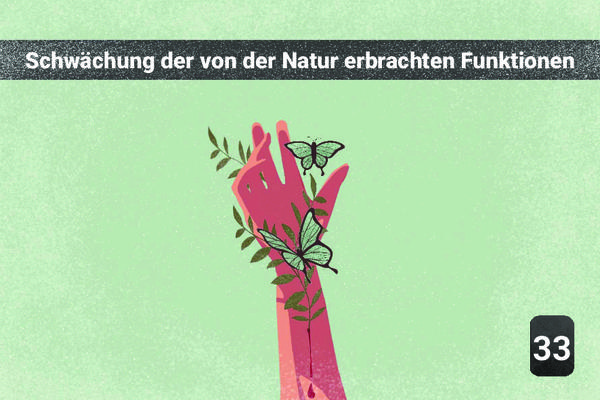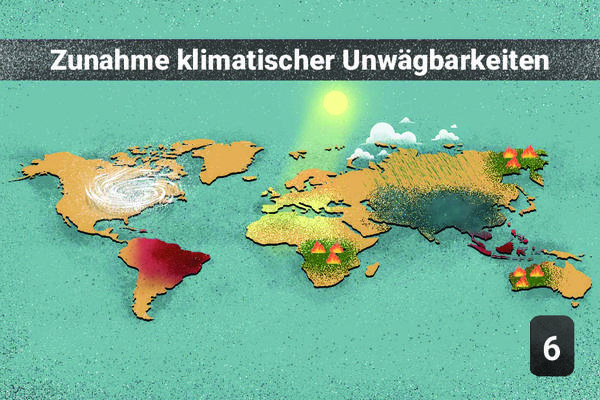22 - Land-system change
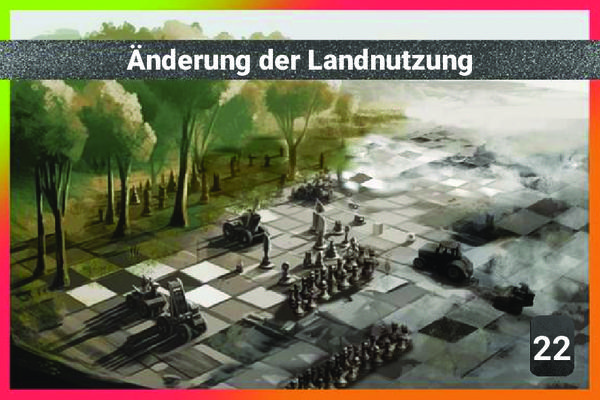
✏️ Diese Erklärung ist in deiner Sprache noch nicht verfügbar, Hier klicken um deine Übersetzung vorzuschlagen oder schreibe eine E-Mail an fdn.memo@marc-antoinea.fr.
“Deforestation and land artificialization reduce plant cover. The contributions to land use change are as follows: 85% through land cultivation, 10% through urbanization, 5% through extraction raw material. The annual deforestation of tropical forests represents twice the surface area of Switzerland. Exceeding this process is measured by the evolution of the forest area in the world compared to the year 1700. The border is set at 75% of the original forest cover, and it is crossed if less than 75% remain. %. Today we are at 60% remaining."
2Ursachen
The destruction of habitats is one of the causes of land use change. This is also the indicator used to quantify it.
The savannahization of the Amazon would significantly reduce the world's forested area, and therefore would have an impact on land use by transforming a large forest area into savannah.
2Auswirkungen
“A change in land use through deforestation impacts the regulatory role of trees on humidity. Which impacts the rain regime locally. Even globally for tropical and boreal forests. A large oak tree transpires up to 1600 liters of water per day. European forests sweat about 400 mm per year, about half of the continent's precipitation."
“Deforestation is the other cause that could cause its transformation into savannah. 17% of the Amazon is currently deforested. Savanization could be triggered from 40% deforestation.
Deforestation in the Amazon basin accelerated greatly between 1991 and 2004, reaching an annual rate of forest area loss of 27,423 km2 in 2004. Although the rate of deforestation has slowed since 2004 (with a reacceleration in 2008 and in 2013), the area covered by forest continues to decrease. The causes of this deforestation are cattle breeding, soya cultivation (animal feed and biodiesel), subsistence agriculture, and some infrastructure projects.
The Amazon rainforest alone represents half of the remaining tropical forests on Earth, and is the largest and most biodiverse tropical forest in the world.

